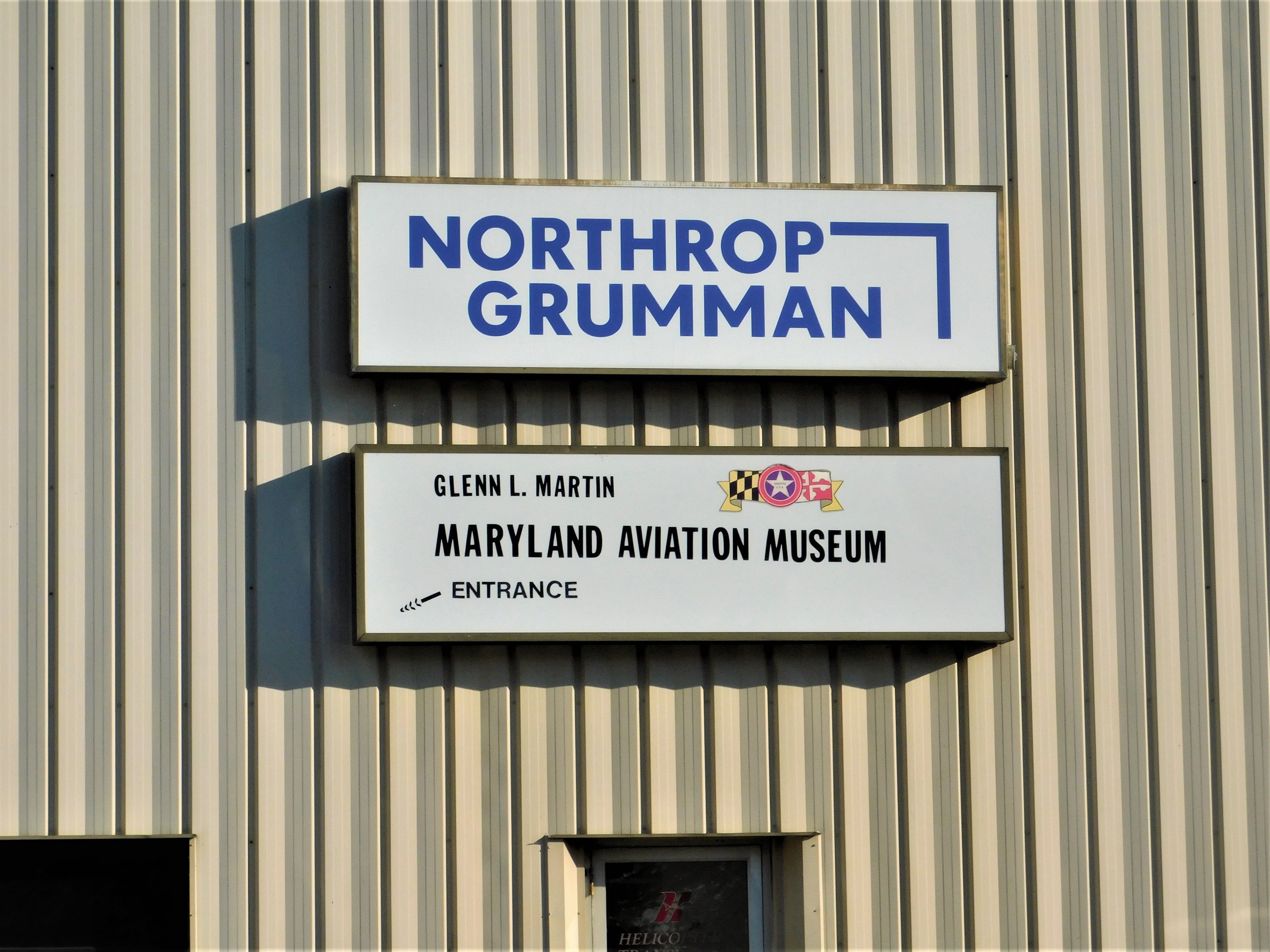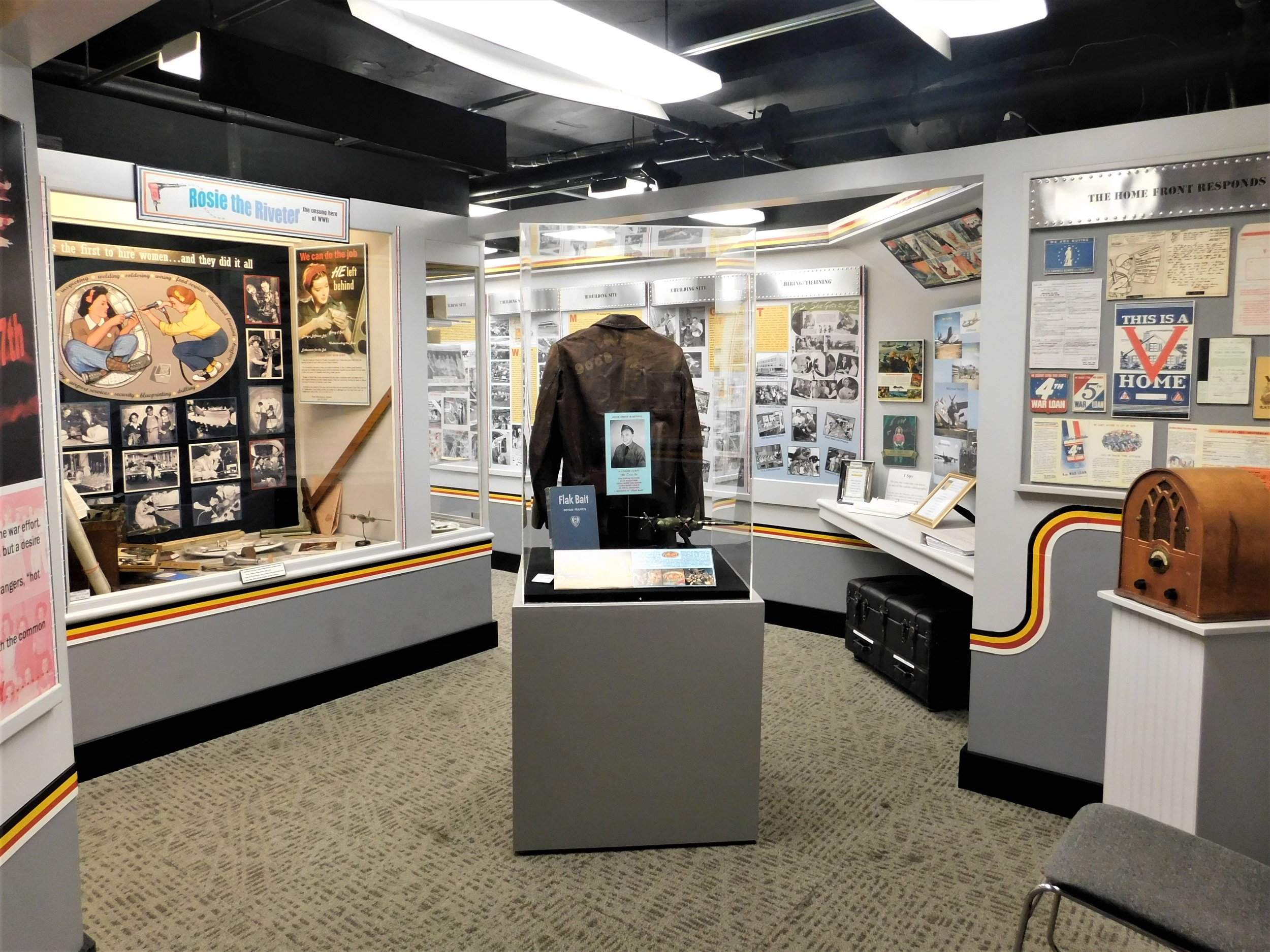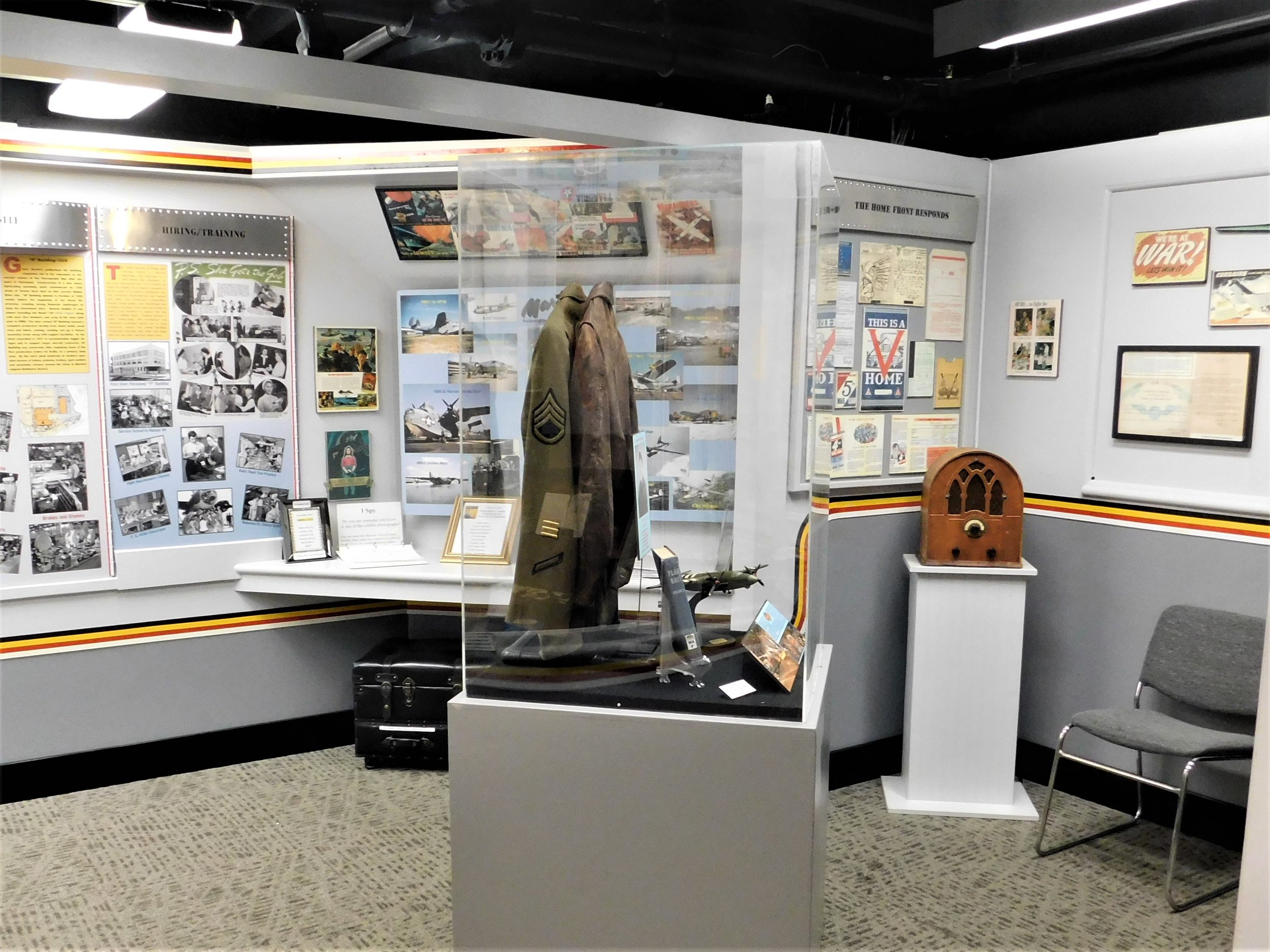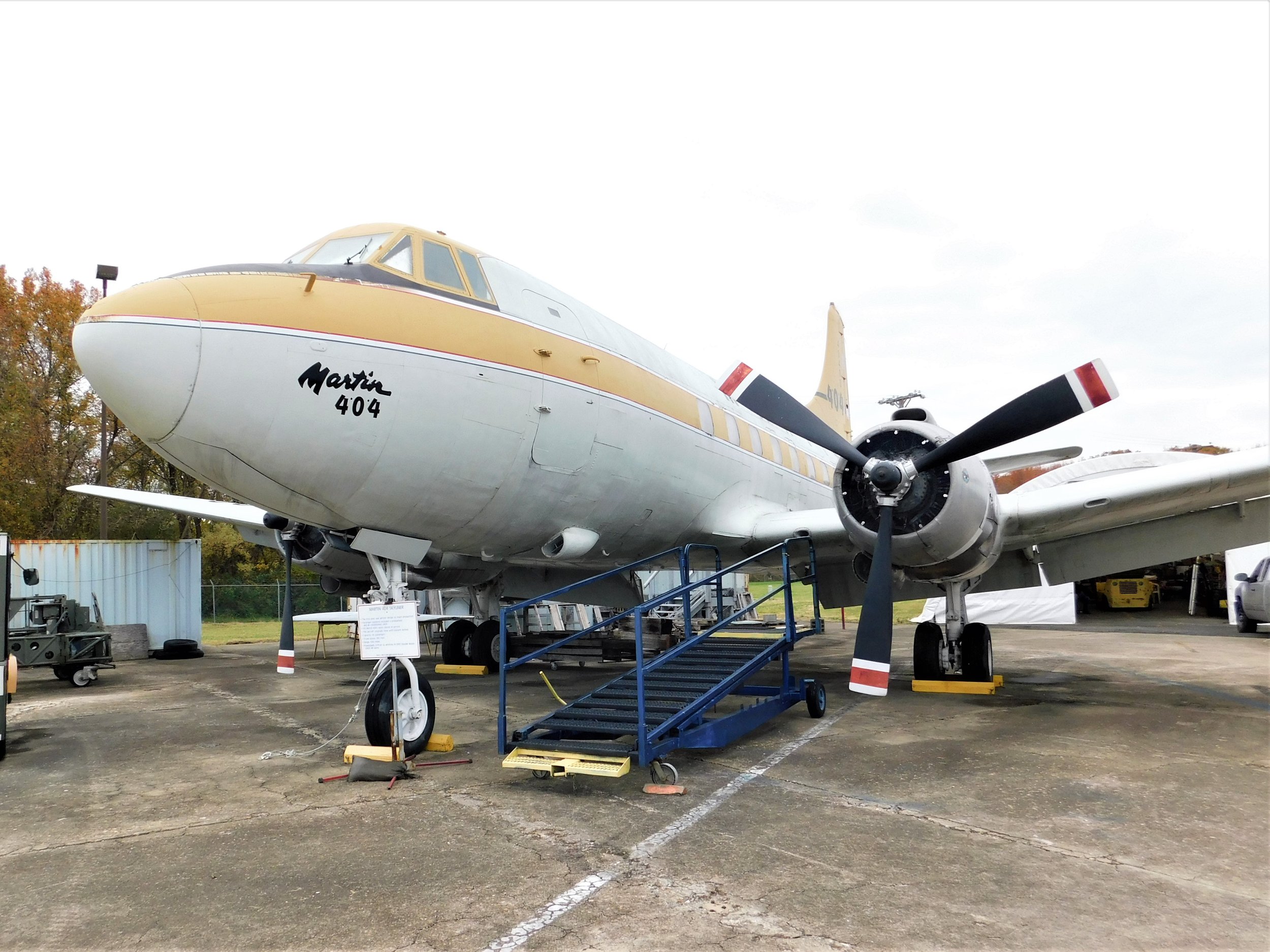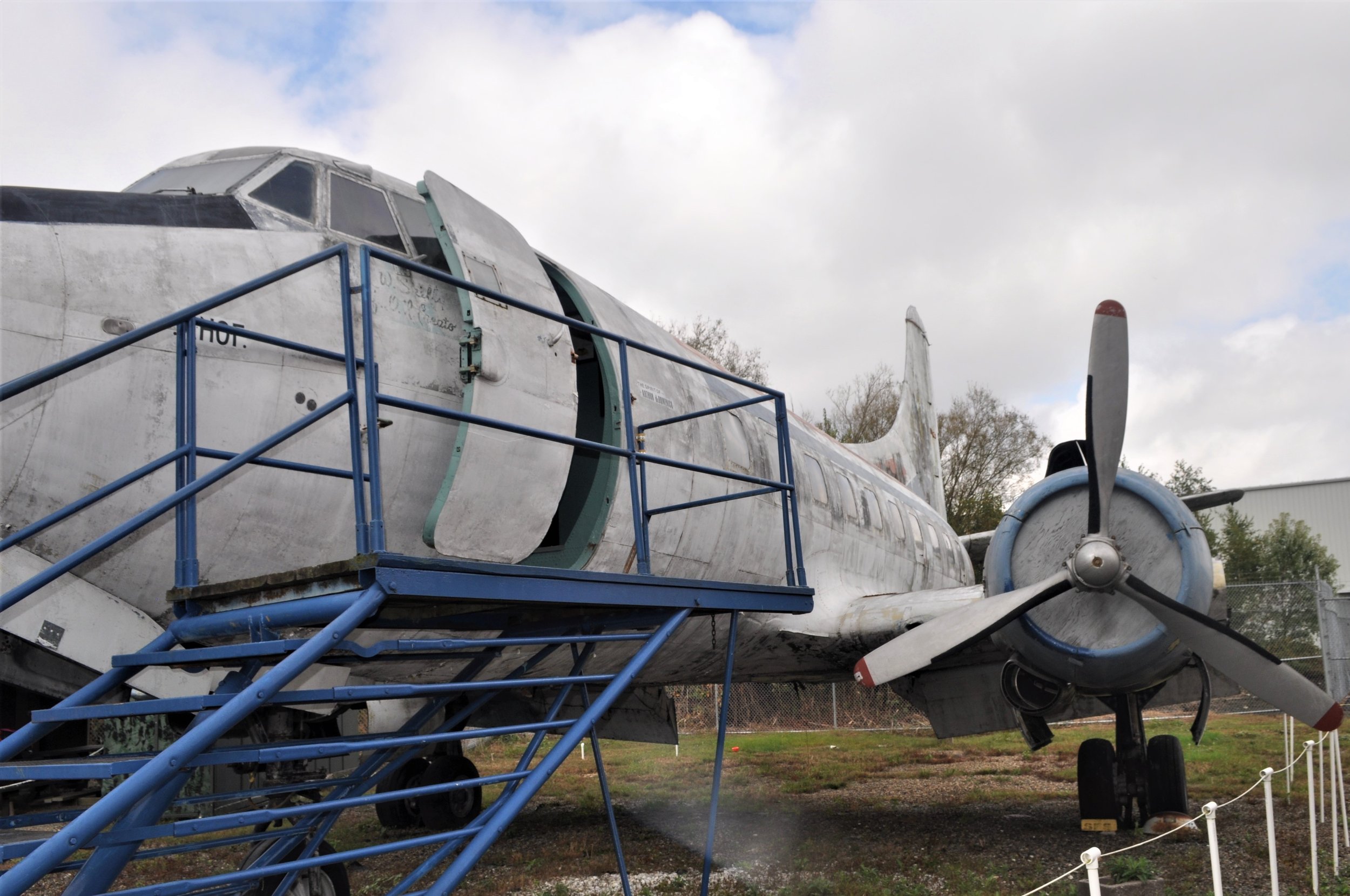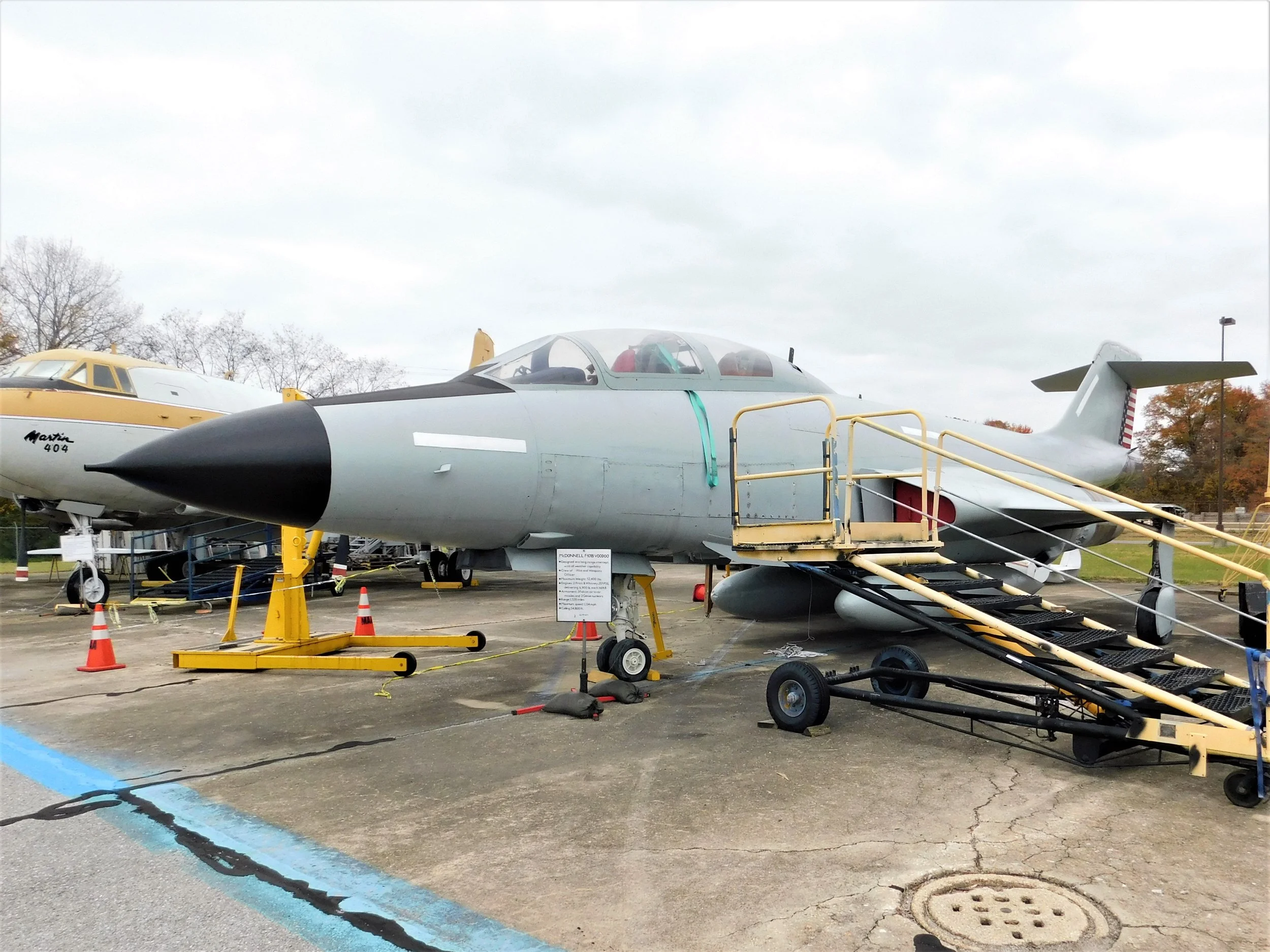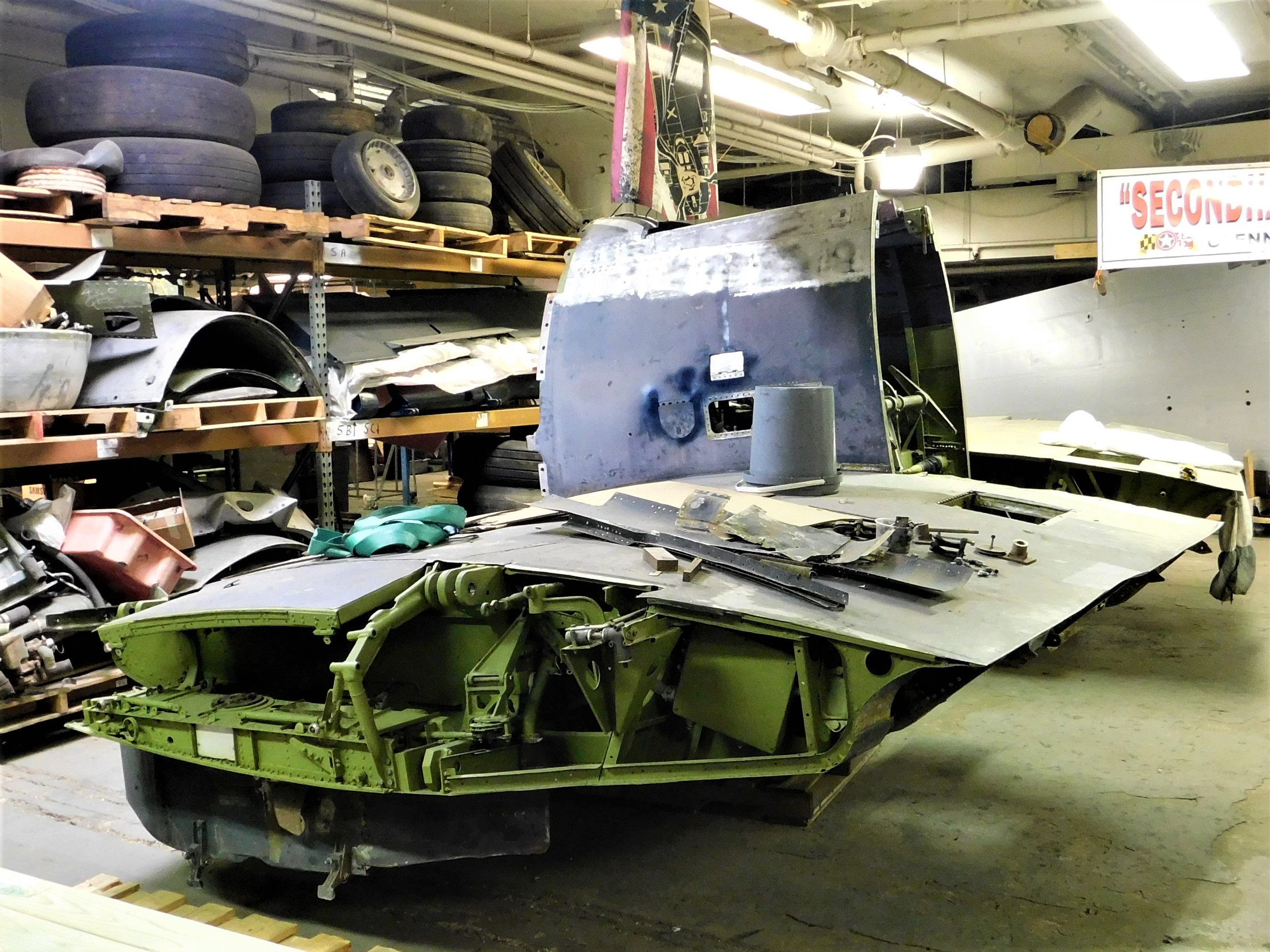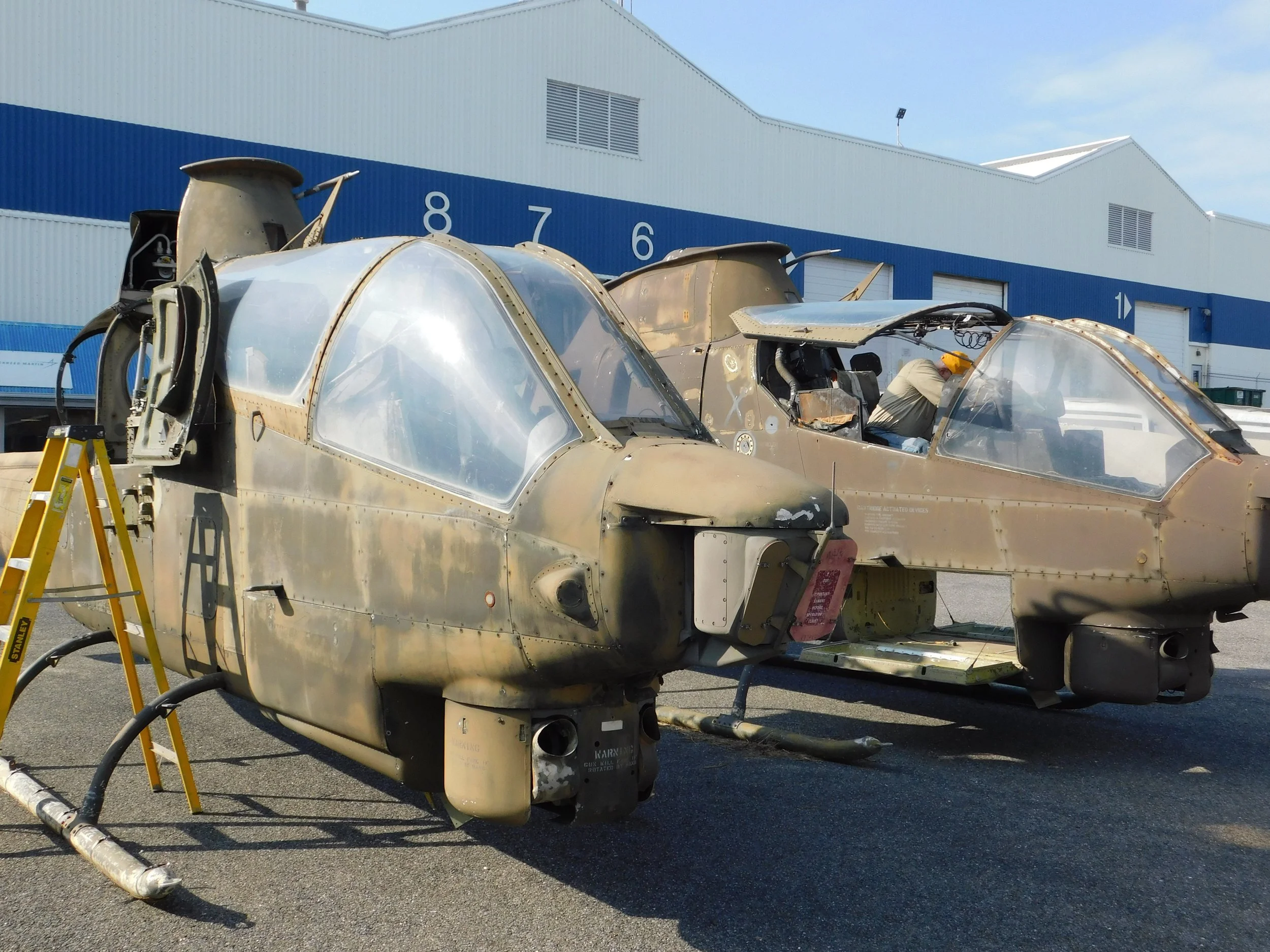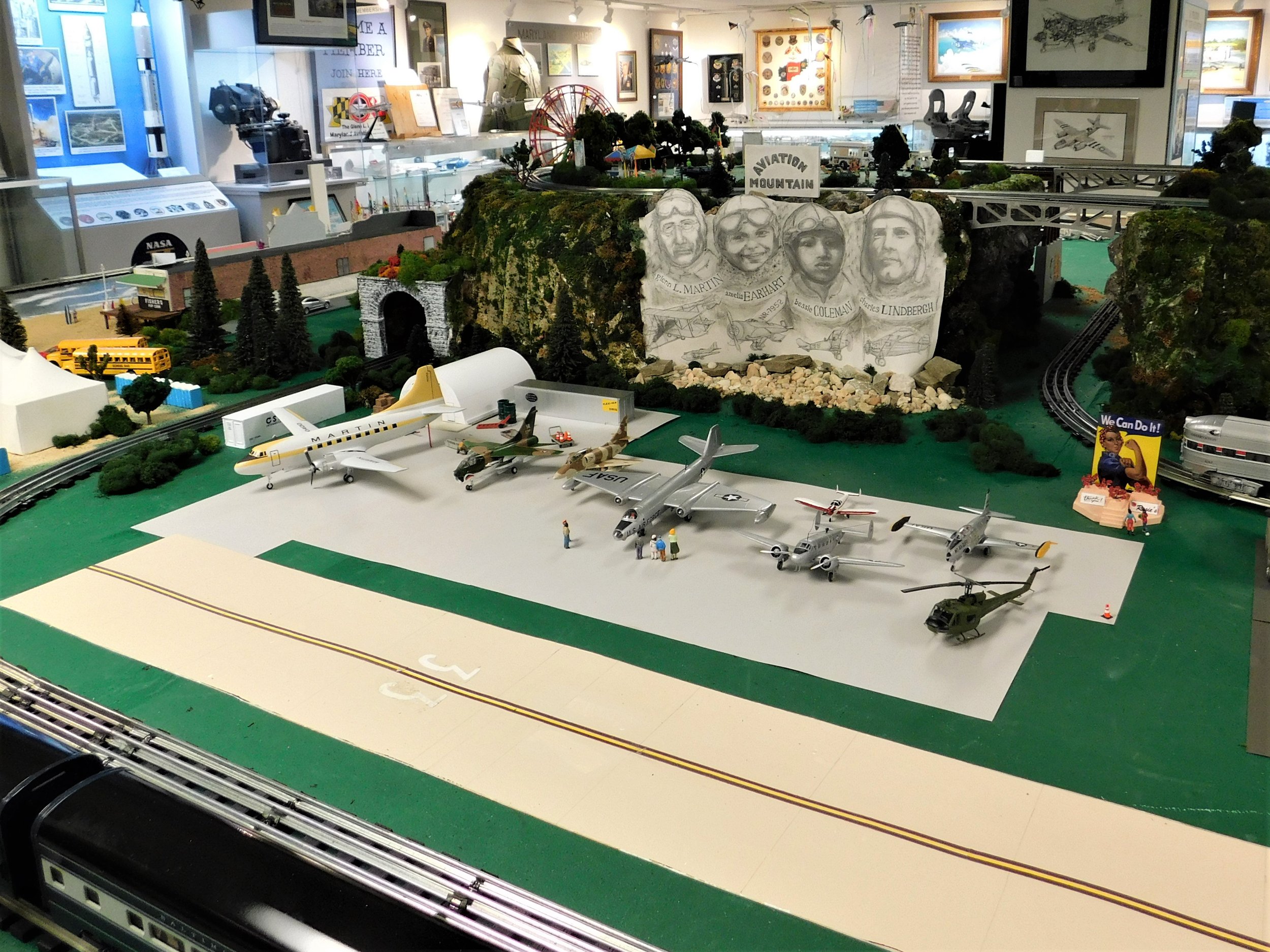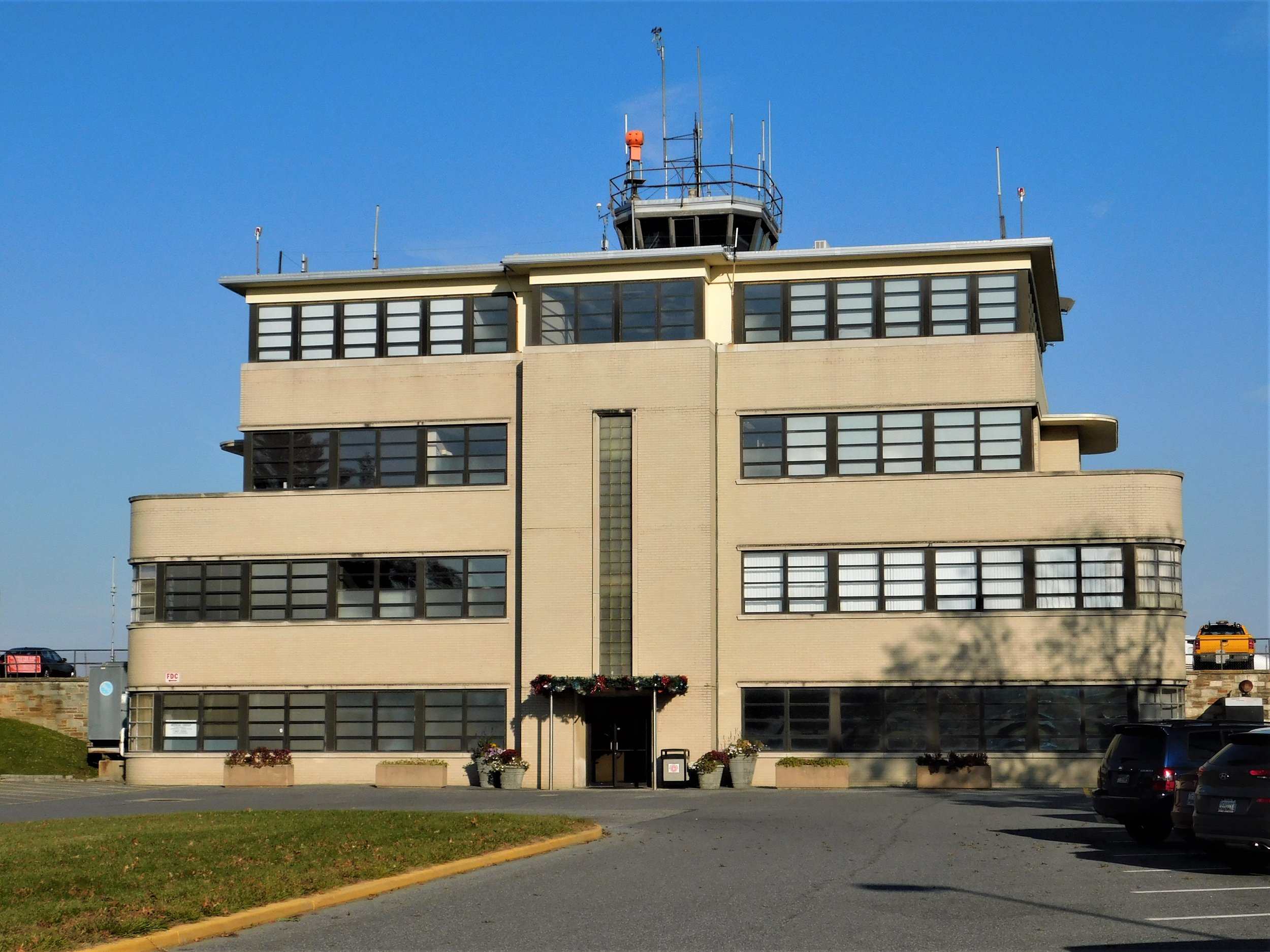The Glenn L. Martin Maryland Aviation Museum
Issue 30 A visit to the Glenn L. Martin Museum in Middle River, MD December, 2021
In the summer of 1915, Paramount Studios was filming the silent movie “A Girl of Yesterday” staring Mary Pickford. The comedy featured a flying scene, which was filmed at Griffith Park in LA. A young aviator, Glenn L. Martin, auditioned for the role of pilot, hoping it would result in some advertising for his flying school and manufacturing company. Martin got the role, and, in one scene, the script called for Martin’s character to kiss actress Frances Marion. The young aviator, a farm boy from Kansas, refused saying "my mother would not like it". Finally persuaded by Paramount boss Adolph Zukor, Martin completed the scene.
Photo Courtesy of the Mary Pickford Foundation
Besides kissing the actress, Glenn Martin flew his own plane in the movie, a Martin TT. In 1912, Martin had built a factory in an old Methodist church in Santa Ana and had performed stunt flying at fairs and air shows to help promote his fledgling company. From that humble start, Martin’s company grew into a major aircraft builder that still exists today. The Glenn L. Martin Company has had various iterations over the years including: the Wright-Martin Company, the Martin Marietta Corporation, and, since 1995, Lockheed Martin, which is a major aerospace company today.
————————————————————————————————-
Founded in 1990, The Glenn L. Martin Maryland Aviation Museum is located in Hangar 5 on Martin State Airport, north of Baltimore. In 1992, the museum acquired its first aircraft, two Martin RB-57s. At the same time, Martin Marietta donated a large number of original photos, press releases, and other materials to the fledgling museum. These materials formed the basis of the museum’s extensive and well-organized archives, which we will see later.
The museum has several areas and I began my visit in the small, but very interesting, main exhibit hall. Although the displays are similar to what you will see in most museums, these are extraordinarily well done. They are well described and very artistically designed, organized around many of the original photos donated by Martin Marietta.
The majority of the displays center around the Glenn L. Martin plant. This display gives a look at how the airport and plant site were developed in the 1930s.
Although the plant still operates on the airport today, the most interesting part of the operation was during World War II, and many of the displays illustrate life here during the war.
Recreation, especially sports, was an important focus at the Glenn L. Martin plant. By 1944, there were 100 softball teams, 50 basketball teams and over 300 bowling teams. Along with activities like USO shows, sports helped keep morale up during the long days of stressful working conditions, rationing, and missing loved ones.
The numerous original photos thoroughly illustrate the history of the airport, and many original artifacts have been preserved. These artifacts are wide-ranging and many are unique. This is part of a collection of over 200 wooden models built by Adolph Esbrandt, an assembler at the plant.
——————————————————————————————————-
The museum’s aircraft are located on the Strawberry Point flight line, a short distance from the exhibit hangar and museum staff provide transportation there for groups of visitors.
There are around 14 aircraft on display, representing planes that were built here as well as aircraft that were stationed at various bases in Maryland.
Martin 4-0-4
After World War II, the Glenn L. Martin Company, like most manufacturers, raced to convert their war production facilities to peacetime use. First flown in 1947, the Martin 2-0-2 airliner entered service with a number of airlines, most notably Northwest Orient and TWA. Although the 2-0-2 was unpressurized, it saw extensive airline service. After an accident to a Northwest Orient 2-0-2 (caused by a microburst), Martin made a full redesign. This new model, which was larger and pressurized, was designated the 4-0-4.
The 4-0-4 entered service in 1951, with the bulk of the 103 aircraft built going to Eastern and TWA. The 4-0-4 on display, serial number 14233, was delivered to Eastern Airlines in 1952.
The 4-0-4s were soon replaced at the major airlines by turbine aircraft, but they saw a long career at second level airlines such as Allegheny, Piedmont, and Ozark.
14233 in service with Shawnee Airlines, used on routes to the Bahamas. Photographer: David.P.Henderson
The 4-0-4 was a very reliable workhorse and, after that period of their life, many of them went to commuter and regional airlines. After Eastern Airlines, the 4-0-4 on display flew for Shawnee Airlines and also for Florida Airlines.
From Aerial Visuals, Photographer: Paul Thallon
The plane was donated to the museum in 2001 and flown to Martin State from Camarillo, California.
By the way, there is only one Martin 2-0-2 remaining and we toured it, both inside and out, at the Aviation Hall of Fame & Museum of New Jersey in Issue 1.
At first glance, the heritage of this plane may not be obvious and I’ll admit I had to go to the placard to figure out what I was looking at. This Republic RF-84F Thunderflash was a reconnaissance version of the F-84 Thunderstreak. The primary visual difference between the F-84F and the RF-84F is that the Thunderflash has air intakes in the wing roots, rather than in front, allowing for camera placement in the nose.
National Museum of the U.S. Air Force
The history of the F-84 goes back to 1946 when the Thunderjet, the original straight-wing version, made its first flight. It had inferior performance to the North American F-86, and a swept wing version of the F-84 was developed. The straight-wing F-84 was the first fighter to be capable of air re-fueling and was flown in combat during the Korean War.
The designations of the F-84 family can be confusing. The straight wing version was still being produced while the swept wing version was developing, and the production version of the swept wing was designated the F-84F, while the final straight-wing version became the F-84G. To add to the fun, a turboprop version, the F-84H Thunderscreech was built. The propeller blades of the turboprop were designed to be supersonic at the tips, even at idle, making it probably the noisiest plane ever built, and it never went into production.
National Museum of the U.S. Air Force photo
The RF-84F Thunderflash was first operational in 1954 and it remained in service with the Air National Guard until 1972. In the mid-1950s, the Thunderflash was tested in a program called FICON. It involved hanging an RF-84F from a B-36. The B-36 would fly near enemy airspace and release the F-84, which would overfly the target for reconnaissance, then return to dock with the B-36.
This particular RF-84F flew with the Air National Guard during the Berlin Crisis of 1960-61 and, like a number of planes in the collection, came from the Aberdeen Proving Grounds in Maryland.
The North American F-100 Super Sabre was the first of the legendary “Century Series” aircraft, entering service in 1954. It had a major role at the beginning of the Vietnam war but was used in secondary roles towards the end of the war, such as top cover for the more capable F-105 and F-4. The F-100 was in active-duty squadrons until 1971, and served with reserve squadrons until 1979.
The second of the Century Series aircraft was the McDonnell F-101 Voodoo. It was introduced in 1957 and served on active duty until 1972. It was flown by the Air Force Reserves until 1982. The Voodoo had a rather short life as an interceptor, but the reconnaissance version, the RF-101, had a longer service life. It played a role in the Cuban Missile Crisis, as well as the Vietnam War. Like all of the Century Series aircraft, the F-101 broke various speed and altitude records, and, like all of those notable aircraft, it was instrumental in the development of future military aircraft.
This Voodoo, a two-seater B model, was transported from the Aberdeen Proving Grounds by road and barge, being too heavy for a helicopter lift.
There are stairs at some of the planes and, at certain times, the museum has “Open Cockpit Day”, with all of the cockpit canopies lifted. Check the website for those events.
U.S. Navy National Museum of Naval Aviation photo
The Martin AM-1 Mauler was first flown in 1944 but did not enter service until 1948. The Mauler was a single seat carrier attack aircraft, powered by a 28-cylinder Pratt & Whitney R-4360 Wasp Major. It could carry a large ordinance load and was a very capable dive-bomber. It was, however, difficult to fly in formation and was a handful during carrier landings. Arriving in the fleet at the same time as the Douglas AD-1 Skyraider, the AM-1 was bigger and more capable, but pilots preferred the easier to fly Skyraider. There were only 165 AM-1s built and they only remained in the fleet until 1953. A small number of 2-seater AM-1Q electronic warfare models were built and assigned to VC-4 at NAS Atlantic City.
On the flight line you will see a number parts of two Martin Maulers. In 2009, museum staff traveled to Midland Texas to pick up two newly acquired AM-1s. Although neither plane is complete, the museum is in the process of making one restored Mauler out of the two sets of parts. Below is one of the two Maulers as it was in Texas.
Photo Courtesy of the Glenn L. Martin Maryland Museum
————————————————————————————————-
Almost every museum has a restoration shop. That area is not usually open to the public and the Glenn L. Martin Museum is no different. I was lucky, however, that on our way back from the flight line, my escort, Bill Zekenakas, stopped by the restoration hangar to give me a quick tour.
The first plane I saw when entering the restoration area was this replica of a Martin MS-1.
The MS-1 was an experimental scout plane intended to be stored on a submarine and launched from the deck. The prototype first flew in 1923 and continued in testing until 1926. Six of these planes were built, but none survived.
MS-1 in Hampton Roads, Virginia in 1923 US Navy photo
Several years ago, the museum undertook the project of building a full-scale replica of this historic aircraft.
The replica is nearing completion and the museum will likely leave some of the structure uncovered so that the excellent workmanship will remain visible. When I visited, Fred Fahdt, a 90-year-old volunteer, was hard at work on the MS-1.
Museum A & P Ray Helmick gave me a tour of the primary restoration area. Besides the Martin Mauler, there are various other projects underway, as well as rows and rows of parts.
About 70% of the work has been completed on the extensive project of turning the two historic Maulers into one complete AM-1. From just this section of wing root and part of the fuselage, you can see the extent of the work it will take to produce a rebuilt Mauler.
Most of the work has been done on this section of fuselage. Although the Mauler is not currently planned as a flying restoration, all areas will be restored to original condition, most of which won’t be visible. The restoration is being done to a very high standard.
The Pratt & Whitney R-4360 Wasp Major engine that powered the Mauler was the largest-displacement aviation piston engine to be mass-produced in the U.S. The Mauler’s competitor, the Douglas AD-1 Skyraider, was powered by the smaller 18-cylinder Wright R-3350 Duplex-Cyclone. The museum will have a display of each of these huge powerplants.
One of the many projects in the restoration area is the full restoration of this cockpit section of a Martin 4-0-4.
Once again, you can see the amount of work that will go into producing just one exhibit.
The museum is in the process of searching for a new home- a much larger space, under one roof, that will house the entire collection. Besides the planes under restoration, the facility has many interesting and unique items, including this Pietenpol Air Camper, that will be able to be put on display once a new home is found.
In front of the restoration hangar are several recent acquisitions, including this pair of Bell AH-1 Cobras. These are the single engine versions, with a Lycoming T53-L-13 turboshaft engine, that were operational from 1967-2001. The later, twin-engine model, the SuperCobra, was operational from 1971-2020. (These helicopters were also referred to as Hueys. Huey is another problematic designation which I’m not going to get into here, but the name refers to a wide range of Bell helicopters).
—————————————————————————————
Returning to Hangar 5, I took a quick tour of the museum’s research area. Most museums have an area like this, but materials at the Glenn L. Martin Museum are better organized than most, giving excellent research capability.
——————————————————————————————-
The final area I toured was the Gallery. There are a variety of displays here such as this Martin 4-333 engine. The inverted 4-cylinder engine was originally designed in 1929 by Louis Chevrolet. Records are unclear how many of these engines were built, but it was probably around 100. They were used on a variety of planes including the Martin Tadpole Clipper and The Pitcairn Autogyro.
Glenn Martin was born in Iowa in 1886 and grew up on the plains of Kansas. Much like the Wright Brothers and Glenn Curtiss, he had an early infatuation with kites, bicycles, and the workings of the internal combustion engine. As a kid, he harnessed the winds of the open prairie by attaching sails to wagons, bicycles, and ice skates. In the process, he learned about the power of the wind and came to respect its unpredictability. In 1905, his family moved to Santa Ana California and, after earning a business degree, he started working in a garage. He soon opened his own car dealership, which became very successful. He continued to be interested in flying and built his first plane, a Curtiss clone (with permission), in 1909. On display in the Gallery is a 1/8th scale model of that first plane, with Martin at the controls. The Martin aircraft company was officially incorporated in 1912.
The museum erects a model train layout during the Christmas season and the finishing touches were being put in place when I visited. The layout occupies a large part of the Gallery, but many of the aviation exhibits can still be viewed.
This is one of the better model railroad displays I have seen. It re-creates a number of businesses and scenes from the local area, including this drive-in movie, which is still in business.
There are also several parts of the airport that are modelled- here we see the Strawberry Point flight line and some of the museum’s aircraft.
I was offered a pre-view of the layout’s operation and it all ran very smoothly. If you visit the museum before January 15th, you will have the added attraction of seeing this great model train display. There is not entry fee to see the trains.
—————————————————————————————————
Let’s finish our visit back on the flight line and look at the first two planes that the museum acquired.
The original Canberra was a British design of the English Electric company. It made its maiden flight in 1949 and was the first British jet bomber. Martin produced the Canberra here under license, and the Martin B-57 had its first flight in 1953. The original B-57A was essentially the same as Canberras being built in England, although the Rolls Royce Avon engines were replaced with Armstrong Siddeley Sapphire engines, license built in the U.S. as Wright J-65s. Only eight of the first B-57As were built as bombers, as the plane was found to be more capable as a reconnaissance aircraft than as a bomber. The subsequent reconnaissance versions were designated the RB-57A. By the time the B-57B was introduced, Martin had made numerous changes, and those Canberras had significant differences from the ones being produced in England and other countries. The main difference was in armament capabilities, but there were other differences as well, such as additional air brakes for greater controllability on low-level bomb runs.
Although the B-57 was not the first U.S. jet bomber (that was the Boeing B-45), it was probably the first to be flown in combat. The Canberra flew its first mission in Vietnam in 1963, on a high altitude reconnaissance flight. By 1965, the Canberra was also being used in a bomber role and both the B-57 and RB-57 continued in service throughout the Vietnam War.
Both Canberras in the collection are RB-57As and they were transported from the Aberdeen Proving grounds in 1992 by Chinook Helicopter.
The Glenn L. Martin Maryland Aviation Museum is another great and unique museum that is really worth visiting.
--------------------------------------------------------
Author’s note- This was an interesting museum to write about because it obviously centers around one man- Glenn L. Martin. I always start my research of a museum by looking for books on the subject, and there is not much written about Martin. Stan Piet, the archivist at the museum, said that although Martin was always a visible leader in the community, he did not seek publicity. He also was not a great letter writer and he did not keep a journal. There is a publication “Box Kites to Bombers – the story of the Glenn L Martin Company” which I was able to find on line. It has no publication information at all, but it seems to have been published by the Martin Company, for public relations. It is not dated, but it ends with mentions of the Martin 2-0-2 and 3-0-3, but not the 4-0-4. That dates it pretty much at 1947 or 1948. The book has some very interesting details of Martin’s early life and his process of building his first plane and teaching himself to fly.
Martin NBS-1 bomber U.S. Air Force photo
It also talks about Billy Mitchell’s demonstration of tactical bombing of ships in 1921, an important event in the development of military aviation. The bombing was carried out with Martin NBS-1 bombers
Martin B-10 bomber public domain
Martin built the B-10 bomber which was the main bomber in the AAF leading up to WW-II. Glenn Martin was also an early experimenter with sea planes and the Martin Company built large flying boats in the 1920s and 1930s, also mentioned in the book. It seems a shame that hardly any of these planes produced by Martin have survived (there is only one surviving B-10, in the Air Force Museum). Martin built many significant aircraft over the years, but I think they are less known because fewer survived than those of other manufacturers. Many of these Martin aircraft are represented in the museum, but only by models or photographs
Martin built over 1,500 of the A-30 Baltimore. They were used extensively in the North African and Mediterranean Campaigns, many with the RAF. None of these aircraft survive.
Martin Tadpole Clipper and P5M-1 Marlin (the Navy’s last operational flying boat)
--------------------------------------------------------
Many thanks to Stan Piet, Bill Zekenakas, Ray Helmick, Fred Fahdt, Jim Hayes, and all the other members of the staff who made my visit interesting and pleasant. There happened to be a staff meeting going on when I was there and I was invited to sit in on part of it. There were about 20 staff members in the meeting, all volunteers, and it was a reminder of how much work goes into operating an aviation museum, so often by unpaid volunteers. We are lucky that these professionals put in so much time and work to preserve aviation history for us.
----------------------------------------------
To learn about what to do in the local area, museum hours and costs as well as books to read and other interesting odds and ends, keep reading! At the end you will find a photo gallery of the entire museum.
PLANNING YOUR VISIT
Open Wednesday, Friday, and Saturday, 11-3 Admission free, donations gratefully accepted.
FLYING IN
Martin State Airport (KMTN) has a 7,000 runway (15/33) and a full service FBO. There are GPS, LOC, VOR, and LDA approaches. The original terminal building is still there, and the museum is in the hangar next door.
LOCAL ATTRACTIONS
The airport is just 10 miles from downtown Baltimore. The Inner Harbor area is great to visit with restaurants, historic sites and lots to do https://en.wikipedia.org/wiki/Inner_Harbor. Not far from the Inner Harbor is the B&O railroad museum https://www.borail.org/.
WHERE TO EAT
The Landing Strip restaurant is located nearby and was recommended by museum staff. There is an airplane on the roof, and you can see a model of it in the last photo of the model train layout above.
The museum staff also mentioned the nearby Burger King, which is decorated with historic Martin aircraft photos provided by the museum.
SUGGESTED READING
The novel, Cloudmaker, by Malcom Brooks, takes place in Montana in 1937 and revolves around the building of a Pietenpol Air Camper. It is a family epic that flashes back to life in the West in the 1800s, giving a great look into a very different life in the not too distance past. Inspiration for the book came from the Pietenpol in the “Museum of the Rockies”, in Bozeman Montana, that we saw in Issue 3.
Besides the Pietenpol, a Longines “Charles Lindbergh” watch features in this book.
Photo courtesy of the Smithsonian Institute
Lindbergh designed this watch after his historic flight, to aid with celestial navigation, and the original is on display at the Air and Space Museum. This watch is also known as the “Hour Angle Watch” because the most important part in determining longitude, the hour angle from Greenwich, can be directly read from the watch. Thanks to Martin Museum Docent Jim Hayes for the book recommendation!
MUSEUM WEBSITE
MUSEUMS ARE WHERE YOU FIND THEM
This segment is dedicated to finding interesting aviation artifacts that are in public view- but not in an aviation museum. If you see one send a photo!
Right next to the museum is this 1930s Art Deco terminal that is nicely preserved.
This Grumman HU-16 Albatross served with the Air National Guard at Martin State and is now on display in their parking lot. Although not on public display, it can be seen fairly clearly through the chain link fence. It appears to be nicely restored.
—————————————————————————————————————-
PHOTO GALLERY
Click on any photo to enlarge
Issue 30, Copyright©2021, all rights reserved. Except where noted, all photos by the author
